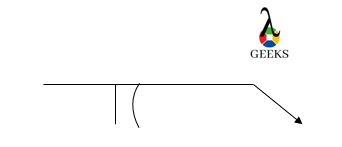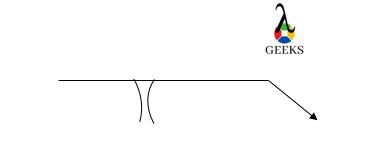This article discusses about flare bevel weld. . Bevelling is a process of removing some material from the base metal for the weld metal to flow in easily.
The welds made after bevelling are called as bevel weld. This article will discuss about flare bevel weld. First we will discuss about what is a flare bevel weld then discuss about its design, symbol, size etc.
What is a flare bevel weld?
A flare bevel weld is a type of bevel weld made between a curved surface and a flat surface, when two curved surfaces are there then it will be called as flare V groove weld.
In this type of bevel weld, bevelling is not required as such because the gap between curved surface and flat surface acts as the valley which we create using bevelling. Hence no more material needs to be scraped out as the valley already exists. The weld metal seeps inside this valley.
Flare bevel weld symbol
There are many types of weld used in industry. These welds are represented by symbols. The symbol which represents flare bevel weld is given below-

Flare bevel weld size
The size of the flare bevel is slightly different than bevel weld. We can measure the leg length of the flare groove.
A minimum leg length is specified based on the type of joint. A weld that is filled till atleast the specified minimum leg length or even higher will suffice the job. The flare bevel weld size is written inside the parenthesis just like the size written for other bevel welds.
Flare bevel weld examples
The flare bevel weld is made between a radial surface and a flat surface. The most common examples of flare bevel weld is discussed in the section below.
- Welding of two pipes– It is done in such a way that the flat surface is connected to the round surface. This is done for making branches in pipe network. The flat end of the pipe is cut in such a way that it makes the desired angle with the second pipe on which it is going to be welded.
- Trophies– Some trophies have a complicated design where a circular surface stand on a flat surface. For wooden trophies this can be done by making slots. But for metallic trophies flare weld can be done to serve this purpose.
- Rod holder- In many applications where a rod needs to be held on a flat surface, a holder is welded on the flat surface inside which the rod can be inserted. The
Flare bevel weld joint
A flare bevel weld joint is simply the joint made by flare bevel weld. This is done to join a work piece with flat surface to another work piece with round surface.
Beveling is not required in this type of weld because the round surface makes a cavity like structure with the flat surface, the molten metal seeps inside this cavity so that it can make stronger bonds easily.
Flare bevel weld design
The flare bevel welds are made for joining a flat surface with a work piece having round surface. The design procedure is similar to design of other welds.
While designing the weld we need to keep in mind that the weld strength is more than the strength of the work pieces. The welds design depends on the type of force that the weld needs to sustain. The required area is calculated using the permissible stress value.
Double flare bevel weld
A bevel weld is a weld done on base metals that are beveled on the edges. A flare bevel weld will have one of the two base metals curved and other flat.
A double flare bevel weld is a type of flare bevel weld in which one of the joint edge is bevelled on both the sides. The work pieces make a V shape between them before double flare bevel weld is made on them. In this type of weld also, we do not bevel the surfaces as the shape of the work piece itself makes the cavity required.
Double flare bevel weld symbol
We already know that different types of welds are represented by different welding symbols. The welding symbol for double flare bevel weld is given below

Note that different types of weld have different symbols which means that different types of bevel welds also have different symbols.
Flare bevel weld vs fillet weld
The comparison between flare bevel weld and fillet weld is given in the section below-
| Flare Bevel Weld | Fillet Weld |
| There is a cavity inside which the molten metal goes to make a strong bond. | There is no cavity required for welding to take place. |
| No bevelling is required | No bevelling is required |
| A flare bevel weld is made between a flat work piece and a round work piece. | A fillet weld is made between two flat plates placed at right anglesTable: Comparison between flare bevel weld and fillet weld
Types of weldThe metal sheets can be joined by using various types of welds. The different types of welds used in the industry are given in the section below-
ConclusionIn this article we have studied about flare bevel weld. The flare bevel weld does not need any type beveling to be done as the work piece themselves have a cavity like shape. The cavity allows the metal to settle in so that it can make strong bond after cooling. Hi ….I am Abhishek Khambhata, have pursued B. Tech in Mechanical Engineering. Throughout four years of my engineering, I have designed and flown unmanned aerial vehicles. My forte is fluid mechanics and thermal engineering. My fourth-year project was based on the performance enhancement of unmanned aerial vehicles using solar technology. I would like to connect with like-minded people. |